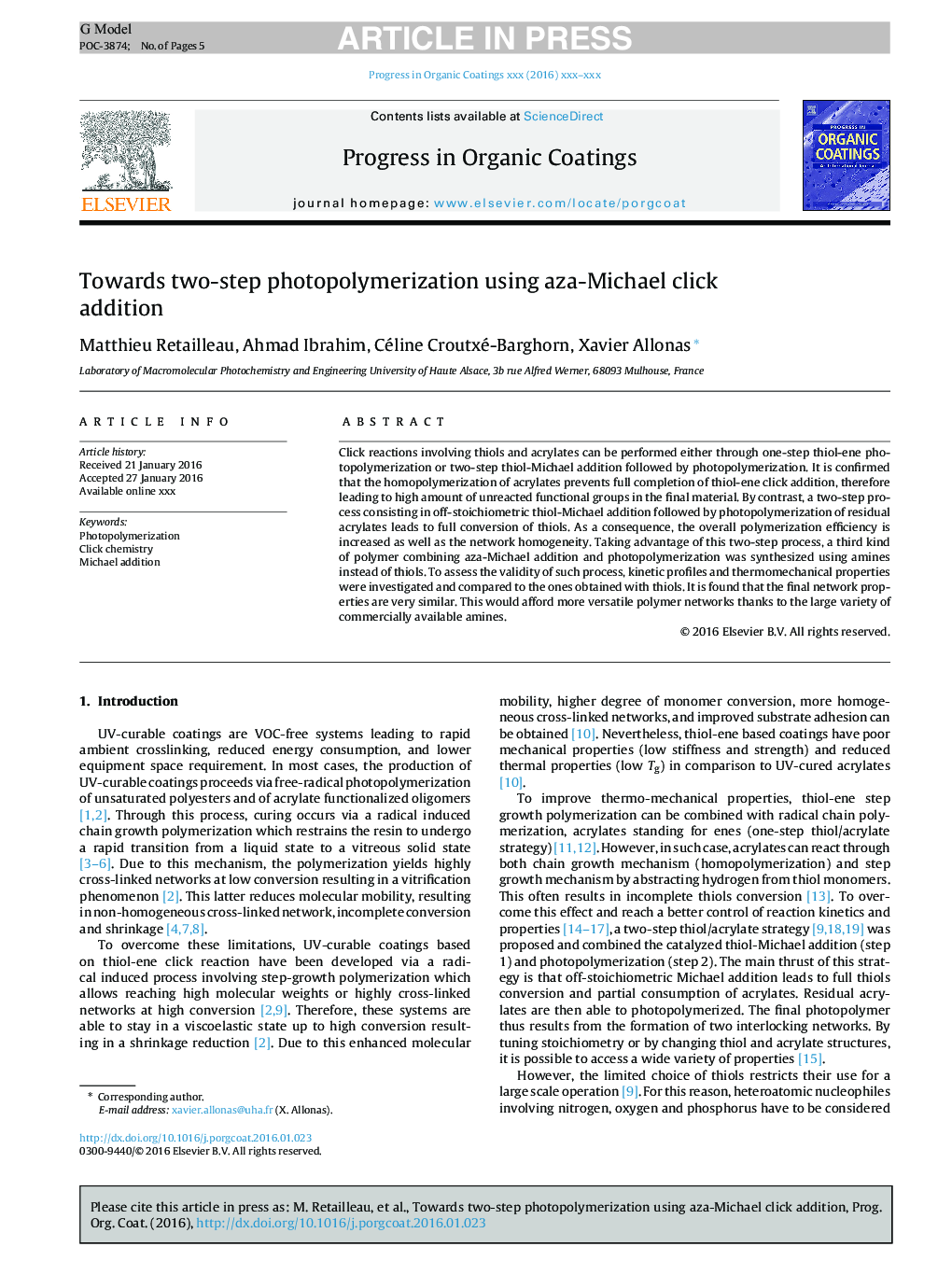| Article ID | Journal | Published Year | Pages | File Type |
|---|---|---|---|---|
| 4999441 | Progress in Organic Coatings | 2016 | 5 Pages |
Abstract
Click reactions involving thiols and acrylates can be performed either through one-step thiol-ene photopolymerization or two-step thiol-Michael addition followed by photopolymerization. It is confirmed that the homopolymerization of acrylates prevents full completion of thiol-ene click addition, therefore leading to high amount of unreacted functional groups in the final material. By contrast, a two-step process consisting in off-stoichiometric thiol-Michael addition followed by photopolymerization of residual acrylates leads to full conversion of thiols. As a consequence, the overall polymerization efficiency is increased as well as the network homogeneity. Taking advantage of this two-step process, a third kind of polymer combining aza-Michael addition and photopolymerization was synthesized using amines instead of thiols. To assess the validity of such process, kinetic profiles and thermomechanical properties were investigated and compared to the ones obtained with thiols. It is found that the final network properties are very similar. This would afford more versatile polymer networks thanks to the large variety of commercially available amines.
Related Topics
Physical Sciences and Engineering
Chemical Engineering
Process Chemistry and Technology
Authors
Matthieu Retailleau, Ahmad Ibrahim, Céline Croutxé-Barghorn, Xavier Allonas,
